|
|
|

I am a black belt in Shotokan Karate with about 10 years of experience. I still occasioanlly volunteer as an assistant instructor at the Orange County JKA. I have also been involved with teaching self-defense to members of the UCI Martial Spirit Club, of which I was a member. In addition to Karate, I am also a former high school wrestler with experience in Judo (5 months), Jiu-Jitsu (3 months), Aikido (5 months) and Iaido (1 year). Over the years, I have had an opportunity to work with many talented people and would like to take just a moment to thank all of my past instructors, training partners and students. You guys are the best! Below are some descriptions of the arts I have studied.
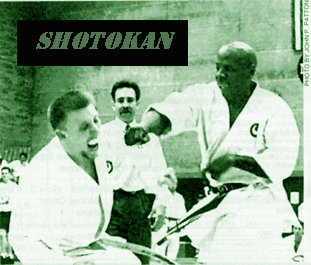
Kevin Warner (l) vs. Roger George (r)/Photo by John P. Patton
Shotokan fighters square off in a traditional
kumite tournament held in Riverside, CA.

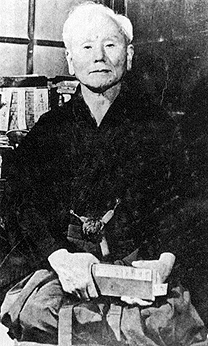 Gichin "Shoto" Funakoshi studied various forms of karate on the island of Okinawa and brought the art to the main island. |
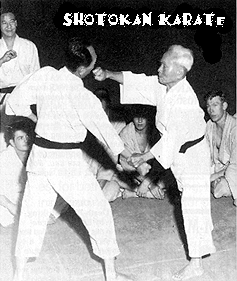 Gichin Funakoshi demonstrates punching technique. As a relatively small man, Master Funakoshi believed that karate techniques must be adapted by each indivual to his own physical attributes and capabilities. |
#3. Judo - Judo is a combative sport developed around the turn of the century by Dr. Jigoro Kano (1860-1938) who was attempting to refine the techniques of Jiu-Jitsu into a standardized form of competition which he hoped would one day become a national sport in Japan. In the 1960's it was introuduced into the Olympic Games. It focuses on throws and takedowns, for which points are awarded. You can also win a Judo match by pinning your opponent or by forcing him to give up with a submission hold. There is no striking in Judo.
#4. Jiu-Jitsu - Basically a more street oriented version of Judo, that focuses on taking down opponents who are trying to punch your lights out and then obtaing a hold or position that eliminates any doubt that continuing to fight would no longer be in their interest. Hopefully this is all done before anyone is seriously injured, but it gives the art's practitioner the option of efficiently disabling his attacker by inflicting serious harm to his body. Developed by the Japanese Samurais hundreds of years ago, it is considered by many, "the ultimate martial art." The recent success of fighters using Brazilian adaptations of the traditional Japanese techniques in no holds barred competitions (in particular the members of the famous Gracie family) has made the Brazilian style extremely popular among modern martial artists.
#5. Aikido (the way of harmony) - Founded by Morihei Uyeshiba (1883-1969) in the early 1940's, Aikido is a purely defensive, non-competetive martial art that focuses on redirecting agressive energy against the aggresor, often using his own strength against him. Techniques are usually designed to throw an opponent or immobilize him with a submission hold. Strikes are very light and only intended to distract the attacker. Aikido has a strong philosophical center and encourages its practitioners to strive for oneness with the universe, to live in peace and to avoid confrontation whenever possible.
#6. Iaido (the way of the sword) - The Japanese art of drawing the sword from the scabard. Philosophy is simple...if you don't kill your opponent before he has a chance to strike, then you die (and it is very hard to kill an opponent if your sword is still in the scabard). In other words, the best defense is a good offense. Training mostly consists of preforming formal techniques (which are pre-arranged sequences of moves for different situations), and practicing drills to perfect drawing and striking movements.
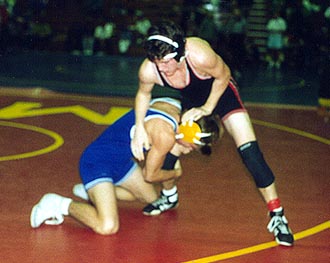
A single leg take down (very common in wrestling).
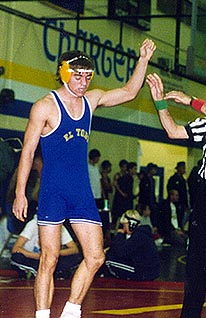
The price of victory: pain and utter exhaustion.

Here I am going for a "cradle" pinning technique.
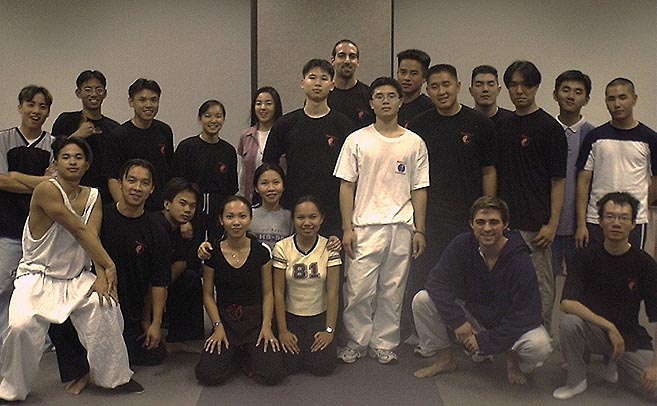
Martial Arts Links
Shotokan Planet
Shotokan Karate Magazine
Black Belt Magazine
World Karate Organization
The Ultimate Fighting Championship
Abu Dhabi Combat Club News
The Martial Arts Network
